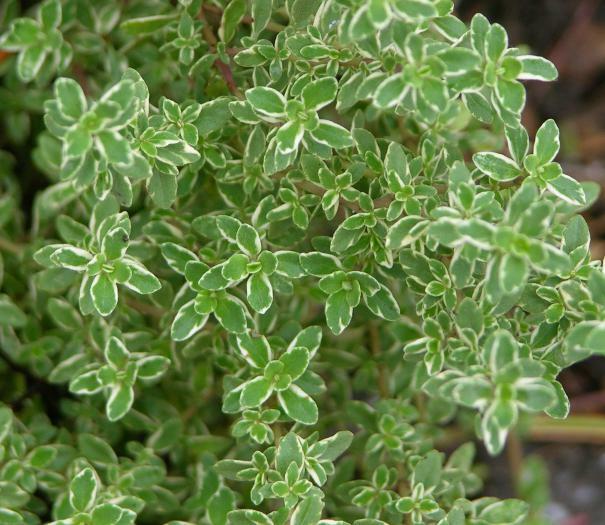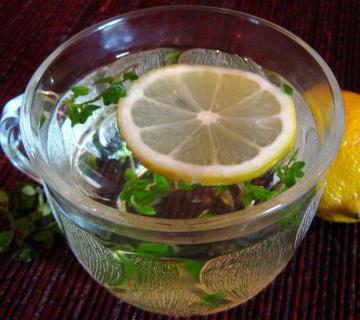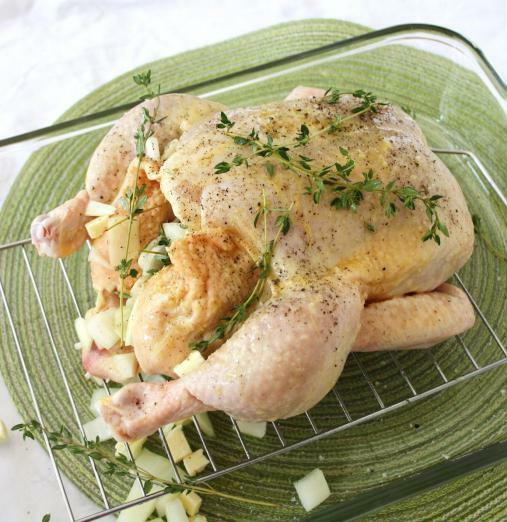Thyme, or thyme. Healing herbs: thyme. A photo
In this article, we will describe in detail what the thyme( or thyme) represents. In addition, you will learn about its useful properties and methods of application. 
General information
Creeping thyme or thyme is a perennial aromatic half-shrub that forms small turfs. The plant belongs to a complex family of the clearing. This is essential oil, which contains such phenolic compounds as carvacrol, thymol and others.
Biological Description
Before describing the beneficial properties of this plant, it should be described. Grass thyme( thyme creeping) is a numerous stems, creeping along the ground. In places such plant gives additional roots. It should also be noted that if it is branchy in the upper part, then in the lower part it is lignified, with numerous ascending generative and vegetative branches. Leaves of thyme are opposite, oval, small, lanceolate or ovate, entire and short-petioled. In the magnifying glass, it is possible to consider well the essential ester oil glands. The flowers of this plant are small, violet-red and bilabiate. They grow on the ends of twigs. Blossoms thyme( photos are presented in this article) in June-July, and fructifies only in August.
Name
The presented plant has many names. It is called thyme( through the letter "e"), thyme creeping, Bogorodskaya grass, borax pepper, sprig, creeper, lebyushkoe, lemon dumpling, mukhopalom, thyme, incense, chebar, etc. 
Distribution of
The genus of thyme includes several hundred species of plants, which are common throughout Eurasia( not in the tropics), but also in Greenland and North Africa. In our country, thyme( or thyme) is widely distributed. So, on the territory of the Russian Federation grows about 170 species of this plant.
It should be noted that it is possible to find such medicinal grass in different places, namely:
- on wood glades and forest fringes of forest zone grows thyme fleas ", creeping and thyme of Marshall;
- on stony slopes and rocks you can find thyme of Urals, Siberian, Crimean, Dagestan and Zhigulevsky,
- on sandy and clayy steppe soils collect Kirghiz thyme, little-leaved and Pallas thyme
Chemical composition of
Creeping thyme( or thyme) contains up to 0,2-0,6% of essential oils.carvacrol and thymol, mineral substances, bitter, organic pigments, tannins, gum, triterpenoids: oleanolic and ursolic acids are found in the plant, and there are also small quantities of terpenes
Useful properties of thyme
Essential oils of this plant containabout 55 components. The useful properties of thyme are due to the content in it of methoxylated flavonoids, which have a fairly high spasmolytic activity. In the grass of thyme there is a large amount of macro- and microelements. It is able to accumulate iron, selenium, molybdenum and boron. 
The presented plant has always been very appreciated by the Slavs. As you know, many nations have existed and still exist the pagan custom of sacrificing to the gods, which consists in burning the dry herb of thyme.
One of the names of this plant is Bogorodsky thyme. This fact is due to the fact that since ancient times in Russia it was customary to decorate this grass icon on the day of the Assumption of the Blessed Virgin.
The medicinal action of thyme is due to the presence in it of essential oils. Thus, thyme is used as an expectorant, antimicrobial and fungistatic agent. Preparations made on the basis of this plant, increase the secretion of the bronchi, thereby facilitating the rapid excretion of sputum.
In medical practice, thymol and essential oils of thyme are actively used for disinfection of the mucous membranes of throat, mouth, pharynx, as well as for fungal diseases of the skin( for example, with epidermophytosis), for suppression of intestinal fermentation and as a helminthic agent. Thus, having bought a liquid extract from thyme, it can be used as an emollient and expectorant for coughing( bronchitis or whooping cough).Infusion with the use of this herb( in collection) is used for bronchial asthma, which is complicated by pneumonia or bronchitis.
It should also be noted that the herbs of thyme, thyme and other species of this plant are often used in rheumatic diseases, as they show an analgesic and warming effect. 
It has long been established that the roots and the aerial part of thymus can enhance the functions of the sex glands. In the eastern countries, it is actively used in the depletion of the body as a tonic. In combination with other plants, creeping thyme is used to treat chronic alcoholism, as well as prostatitis and prostate adenoma.
Where else do they use thyme?
Thyme, the photo of which you saw in this article, is used not only for medical purposes, but also in the food and perfume industry. It should also be noted that the leaves of this plant are almost always used as aromatic spices in cooking. Stems and flowers can be brewed as medicinal tea, and essential oils can be used to perfume cosmetic products( for example, when creating toilet soaps, creams, lipsticks, toothpastes, etc.).
Application in medicine
Back in ancient times thyme was considered a divine herb. Timol, which is isolated from thyme, as well as medicines made from this plant, are used as an anesthetic, disinfectant and anthelmintic. Powder and broths in folk medicine are used to prepare painkillers for sciatica and sciatica. In the form of an ointment on honey, thyme is able to clear the lungs, causing sputum expectoration. Among other things, grass thyme promotes proper digestion. 
Thyme is very often used for the preparation of hot baths, the reception of which helps with nervous diseases, rheumatism, radiculitis, skin rashes, diseases of the joints and muscles. As an external agent used infusion for rubbing the body.
Procurement of raw materials
Most often, thyme is used in folk medicine for medicinal purposes. But in order to apply this herb to create broths and other extracts, it must be properly harvested and harvested.
The presented plant should be harvested during the full flowering period. It is not recommended to pull it out with the root. At the very base, the grass must be carefully cut with a sharp knife, and then rinsed in cold water( if necessary) and shaken vigorously. Dry thyme preferably in the shade outdoors. To do this, leaflets with stems should be spread evenly in 5-7 centimeters on tissue or paper. In this case, the plant needs to be mixed frequently. After the grass is completely dry, it must be crushed and sieved. This procedure is necessary in order to remove all thick wooden stems from the resulting dry mixture. Store finished raw materials are recommended in a ventilated and dry room for two years. What is used for dried thyme? 
Seeds of this fragrant plant are actively used in cooking. As for dry powder, prepared independently or purchased in a pharmacy, it is most often used for decoctions, infusions and medicinal baths. - Decoction. To prepare medicinal liquid for ingestion, it is necessary to take 10 g of thyme( or 2 large spoons), pour in 200 ml of boiling water, and then heat in a water bath( for a quarter of an hour), cool and strain. Take the resulting broth for cough and cold should be on a large spoon 2-4 times a day.
- Infusion. It is used as an analgesic and sedative for headaches, insomnia, neuralgias and radiculitis. For cooking, take dry thyme and pour it with 40-degree vodka in a ratio of 1: 3.Take infusion is desirable on a large spoon 2-4 times a day.
- Fragrant baths. To prepare, take 60 g of raw material, brew it in a bucket of boiling water, and then strain and pour into a bath. Take such water procedures should be with skin rashes, neurological diseases and rheumatism.
Contraindications to the use of
Because this plant contains a large amount of thymol, it is contraindicated in duodenal ulcers and stomach ulcers( especially in the acute stage), cardiac and renal insufficiency. In addition, such a herb is undesirable to use pregnant women, since it can easily cause a reduction in the uterus. This is due to the fact that thyme has toning properties. Long-term use and overdose of drugs based on thyme cause the development of hyperthyroidism.

It is absolutely forbidden to treat with medicinal products of children under two years old! From an overdose, the patient may experience vomiting and nausea. Thus, you can use infusions and decoctions from thyme only after personal consultation with the doctor.
In cooking, also do not get carried away by adding thyme seeds to dishes, because the essential oils that are contained in the plant can cause irritation of the stomach, liver and kidney mucosa.
